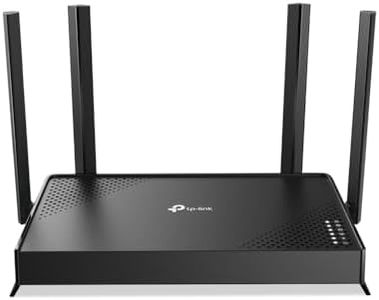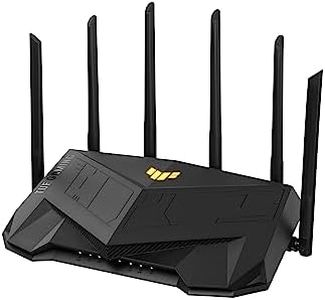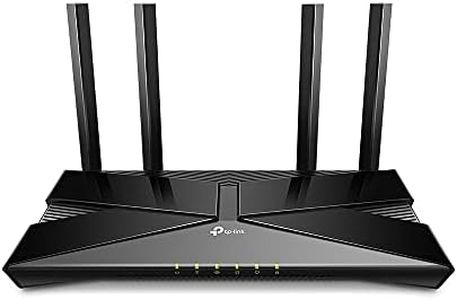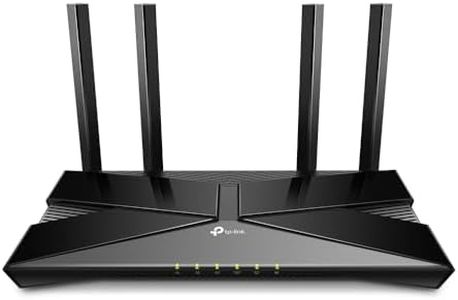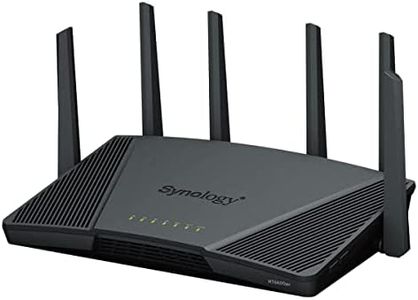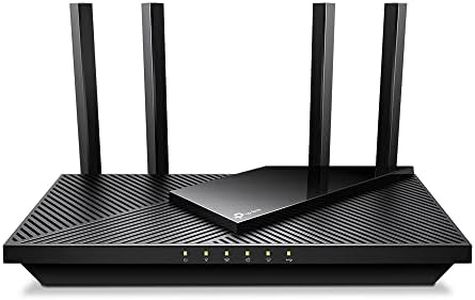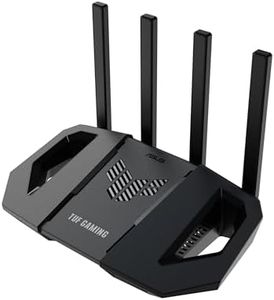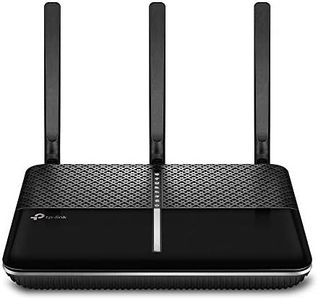We Use CookiesWe use cookies to enhance the security, performance,
functionality and for analytical and promotional activities. By continuing to browse this site you
are agreeing to our privacy policy
10 Best Wireless Modem Routers
From leading brands and best sellers available on the web.Buying Guide for the Best Wireless Modem Routers
Choosing a wireless modem router can be a bit overwhelming since it's a device that connects you to the internet and determines how strong and reliable your home or office Wi-Fi is. The key is to think about your internet use: Are you streaming movies, gaming online, working from home, or just browsing? Also, consider the size of your space and the number of devices that will be connected. By focusing on the right features and understanding what each specification means for your day-to-day experience, you can select a modem router that delivers smooth internet with no hassle.Wi-Fi Standard (802.11 a/b/g/n/ac/ax)The Wi-Fi standard tells you the version of wireless technology the router uses. Newer standards, like Wi-Fi 5 (ac) and Wi-Fi 6 (ax), offer faster speeds, better capacity for lots of devices, and more reliable connections. If you only use the internet for simple browsing on a few devices, older standards might work fine, but for streaming, gaming, or smart homes with lots of gadgets, it's wise to pick a modem router with the latest standard for future-proofing and better performance.
Speed RatingThe speed rating (often shown as Mbps or Gbps) describes the maximum data transfer rate the router can handle. While higher numbers seem better, remember your modem’s speed should match or exceed your internet provider’s service speed for best results. If you stream HD videos, play online games, or have many users at once, a higher speed rating helps prevent slowdowns. For basic use, lower speeds are usually plenty.
Frequency Bands (Single, Dual, Tri-Band)Routers come as single-band (2.4GHz), dual-band (2.4GHz and 5GHz), or tri-band (two 5GHz and one 2.4GHz). More bands mean the router can handle more devices at once and reduce congestion. Single-band is fine for simple use but can get crowded with many users. Dual-band is ideal for most households, offering a faster band for demanding tasks. Tri-band routers are great for large homes or busy spaces with lots of devices all online at once.
Coverage RangeCoverage range is how much area the Wi-Fi signal can reach. Larger homes or offices need a router that advertises a wide range, while small spaces can get away with a standard range. Physical barriers like walls can weaken signals, so consider a router with strong coverage if you have a big or multi-story place, or look for ones with mesh support if you need seamless whole-home coverage.
Number of Ethernet PortsEthernet ports let you connect devices directly for fast, stable internet—good for gaming consoles, smart TVs or desktops. If you have several devices you want to plug in, make sure your router has enough ports. For wireless-only homes, fewer ports is fine, but for mixed setups, having extra ports offers flexibility.
Compatibility with ISPYour router must be compatible with your internet service provider (ISP) and service type (DSL, cable, fiber). Otherwise, it won't work. Always check if the router matches your ISP requirements, especially for modem routers that connect directly to the internet line. If unsure, consult your ISP or look for routers that advertise broad compatibility.
Security FeaturesSecurity features like WPA3 encryption, firewalls, and guest networks keep your network and data safe. Choose a router with strong up-to-date security, especially if you do sensitive work online or have smart home devices. Look for user-friendly controls so you can adjust settings easily—even if you’re not a tech expert.
Parental Controls and App ManagementParental controls and app management let you customize who gets on your network and when, useful for families or anyone wanting control over internet use. Some routers offer apps to manage settings simply from your phone. Pick this feature if you want easy control over what happens on your network, especially for kids’ access.
